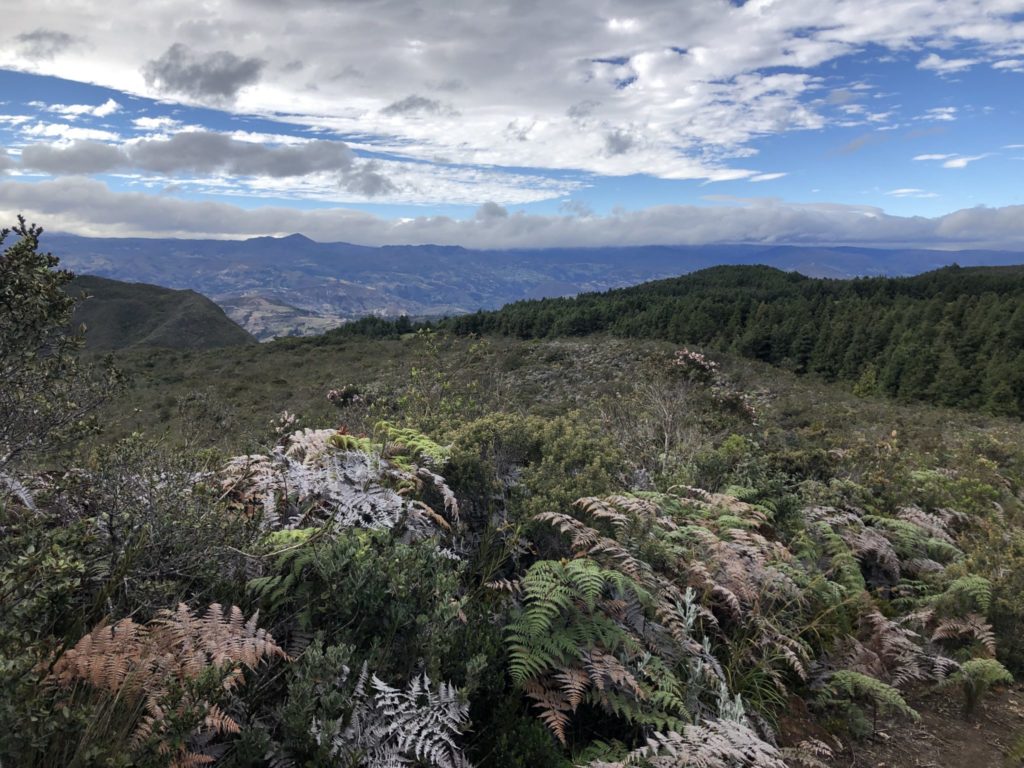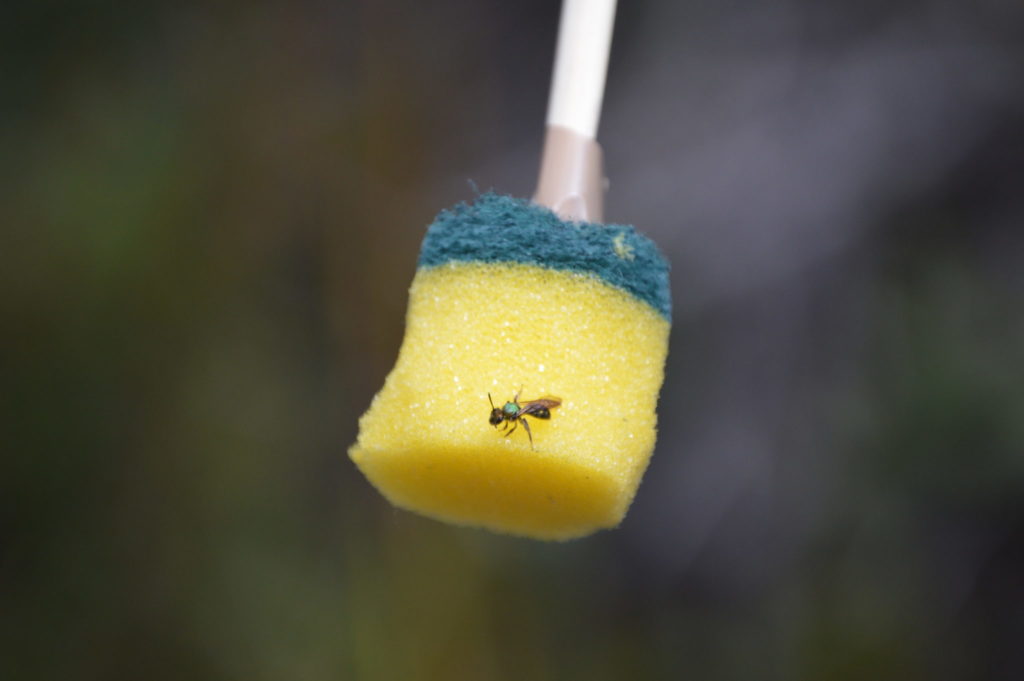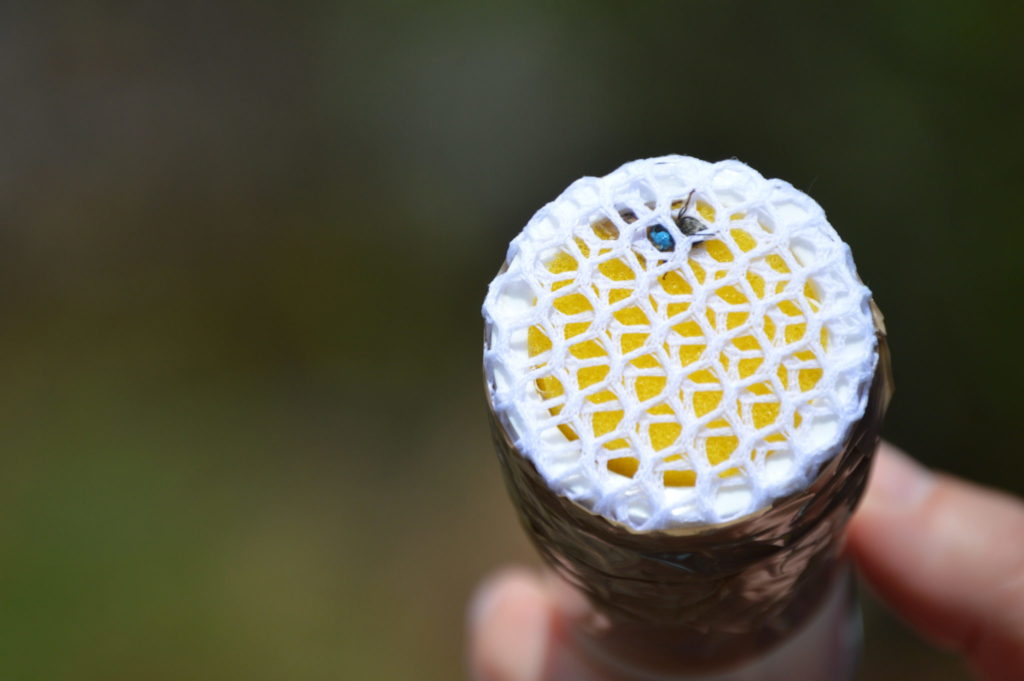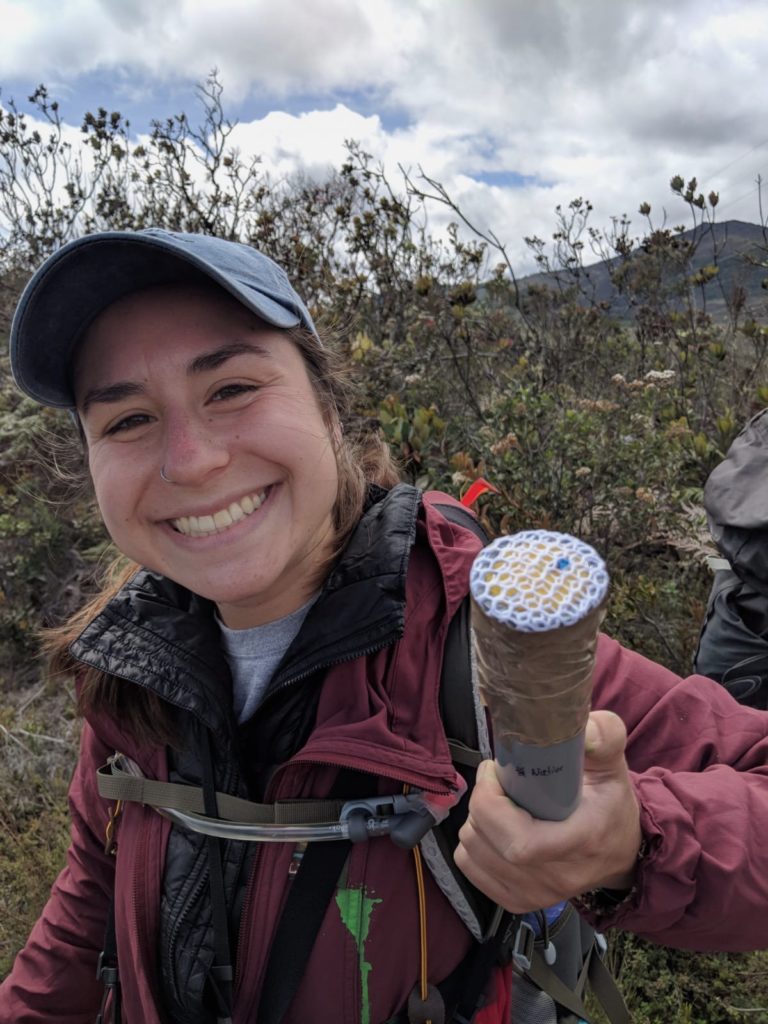Stability and resilience of plant-pollinator networks in an Andean montane community in southern Ecuador
Hi! My name is Rachel and I’m a senior (6 days away from graduation!) studying Environmental Science & Anthropology. I’m writing this post to tell you a bit about the research that I did last summer. Read on if you’re interested in conservation, bees, or the concept of catching said bees and then marking them with a dot of paint for reasons that you’ll soon find out. Last summer I went to Ecuador with Professor Jessie Knowlton and three other Wheaton students and hiked through the Andes mountains every day for two weeks collecting data for my senior honors thesis. My research focused on assessing a plant-pollinator community’s vulnerability to environmental stressors, such as climate change and habitat fragmentation. We did so by measuring the strength of the interaction networks between plants and their pollinators in the habitat, because we know that if there are more interactions, or if the interactions between species are especially strong, then the community itself will be more resilient to various stressors.
In order to create interaction networks between plants and their pollinators, we needed to see which bees were going to which plants. We did this two different ways, and got two different samples. One method we used was capturing every single bee or wasp pollinator and writing down which plant we found it on. This gave us an idea of the association network in this community. The other method was significantly more fun for anyone who isn’t really afraid of bees, or allergic to bee stings, and this is where the paint dots come in. In order to test a bee’s faithfulness to a particular flower species (floral fidelity is another tool that we use to determine the strength of the interaction network), we use a method called mark-recapture. First, you catch a bee with a net. Then, you put it in a special tool that looks like a push pop or syringe (check out the pictures) and mark it with a spot of paint through the mesh netting at the end of the tube using a paint pen from the craft store. The color of the dot corresponds with the species of plant the bee was visiting. Then, the next day, you go back out and recapture the bees that were marked, and see if they were on the same species of plant as the day before, which tells us how faithful they are.
Without going into tons of statistical analysis here, we basically found that honey bees, which are non-native to this habitat, dominated the community that we were studying in the mountains, which is good for overall community resilience to disturbance, but not the best for promoting biodiversity since honey bees can outcompete native bees. This research is important because we don’t know much about the native vs. non-native pollinator dynamics in this particular habitat, so insights like these can help us plan our conservation measures and species-management programs more efficiently if we know what role non-native species play in the overall network of interactions. For me personally, this research was important because it was my first time designing and executing my own experiment in the field. I worked with field assistants (mostly in Spanish) for about 12 hours every day, which helped my communication skills and ability to roll with the punches. I quickly learned that bees only forage when it’s sunny, warm, and there is no wind, which is approximately 3% of the time in the Andes mountains. So as you can imagine, field work can definitely be challenging, especially when the weather isn’t in your favor!! However, doing this work is extremely important for conservation, and it’s worth it when it’s for the planet that we all share. Not to mention, getting an honors thesis out of it all was incredibly rewarding, so I’d do it again in a heartbeat.




-
Categories:
- Academic Festival